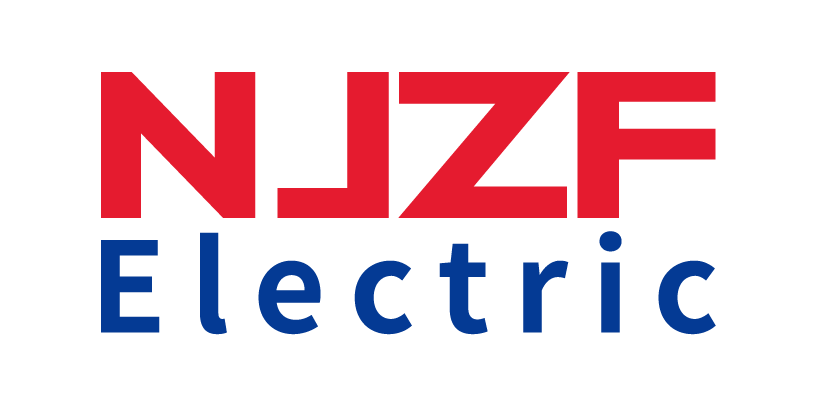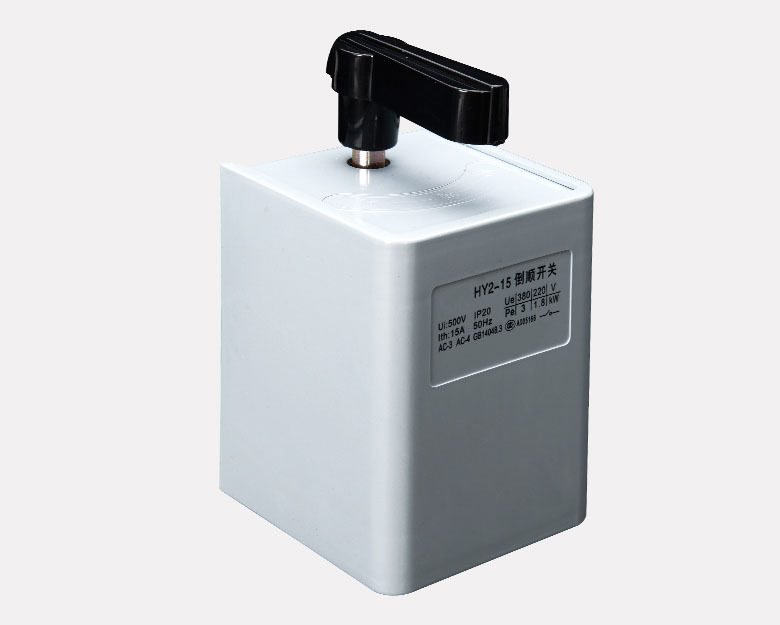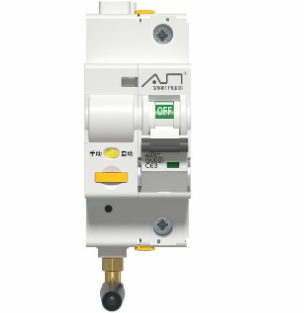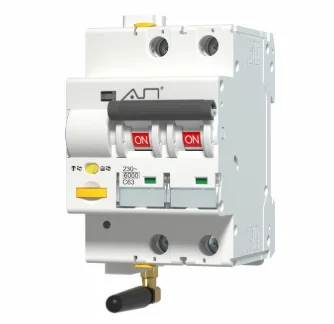Product
Product Categories
The HY2 series reversing switch is suitable for use in AC 50HZ circuits with rated voltage of 380V and below and rated current up to 20A. It is used to directly turn on and off a single cage asynchronous motor, allowing it to rotate forward, reverse, and stop.
The function of the USD87.36 D52-2066 Multi functional LCD Screen Graffiti WIFI model Overvoltage and undervoltage protector is as follows:Overvoltage protection, undervoltage protection, automatic reset, equipment maintenance, safety indication, easy installation, strong adaptability.Scientific design avoids crowded wiring productionspace.The inlet port is consistent with the outletport of the leakage protector, facilitating wiringand ensuring flexibility.It can display six factors including voltage, current, power, frequency, power factor, and battery level.
Model No.: DZ47LE-63/1P 25APrice: USD1.3~3.0 Leakage protector, also known as residual current circuit breaker or residual current switch, is mainly used to protect against electric shock in the event of equipment leakage fault or fatal danger, and has overload and short circuit protection functions.

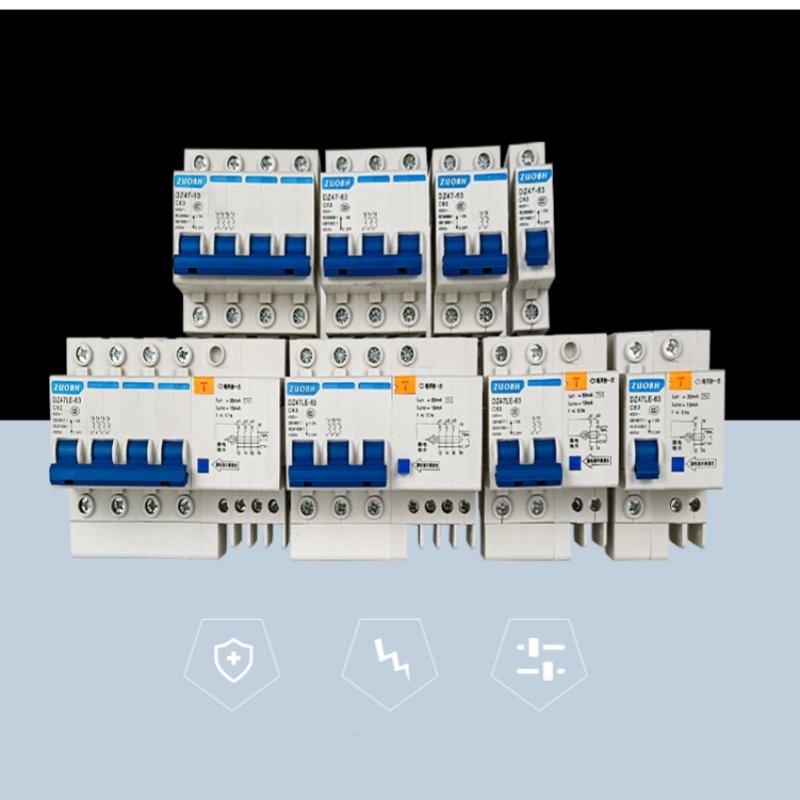
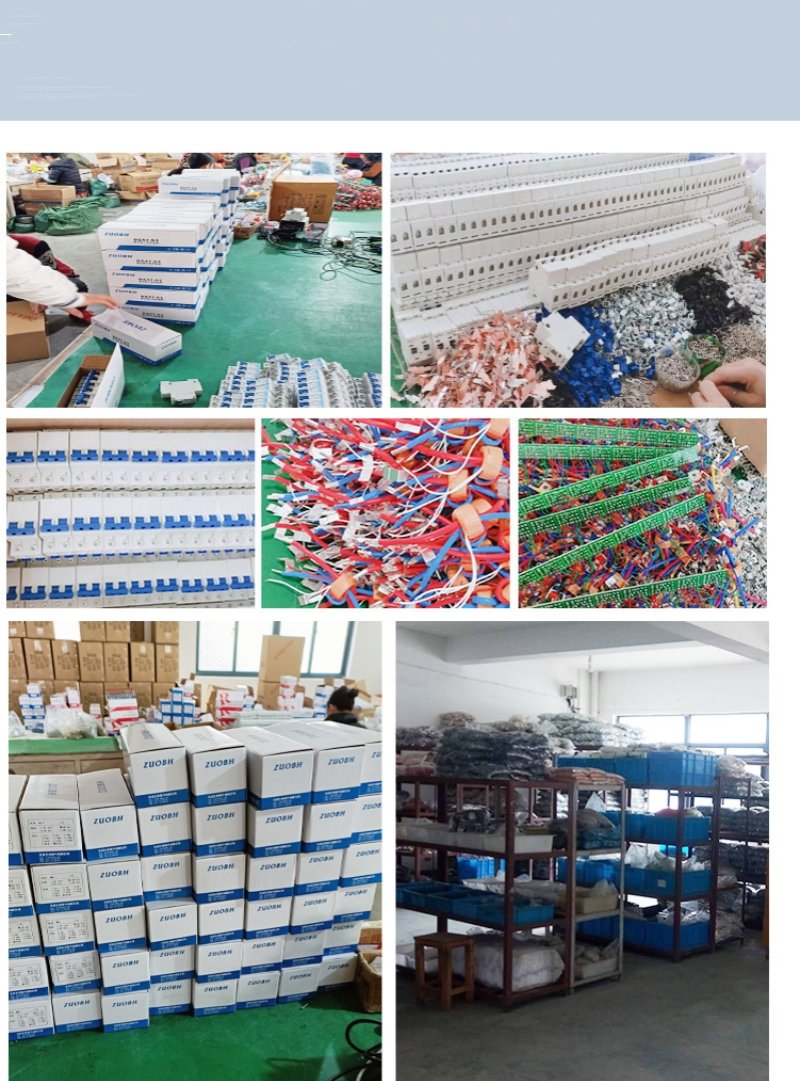
I. Function It is primarily designed to protect electric motors from various electrical faults. For example, in case of an overload, which means that the motor is drawing more current than it is rated for over a period of time. The motor circuit breaker can detect this excessive current and cut off the power supply to the motor, preventing the motor from overheating and getting damaged.It also protects against short circuits. When a short circuit occurs, there is a sudden and very high flow of current. The motor circuit breaker can quickly interrupt this abnormal current flow, safeguarding the motor and other components in the circuit.II. Design and Construction It typically consists of a set of contacts. These contacts are usually made of conductive materials like copper or silver alloy. When the breaker is in the "on" position, these contacts are closed, allowing the current to flow through the circuit to the motor. When a fault is detected, the contacts are opened to break the circuit.There is also a mechanism for detecting overcurrents. This can be a thermal magnetic device. The thermal part responds to the heat generated by the overcurrent (as the current is related to the heat produced according to Joule's law, Q = I^{2}RtQ=I 2 Rt, where QQ is the heat, II is the current, RR is the resistance and tt is the time). The magnetic part responds to the high magnitude magnetic field created by a large, sudden current, such as in a short circuit situation. III. Application Areas In industrial settings, motor circuit breakers are widely used in factories. For instance, in a manufacturing plant with numerous electric motors driving conveyor belts, pumps, and other machinery.They are also used in commercial buildings. For example, in elevators where electric motors are used for lifting and lowering the elevator car. In air conditioning systems, the motors that drive the compressors and fans are also protected by motor circuit breakers.
I. Function It is primarily designed to protect electric motors from various electrical faults. For example, in case of an overload, which means that the motor is drawing more current than it is rated for over a period of time. The motor circuit breaker can detect this excessive current and cut off the power supply to the motor, preventing the motor from overheating and getting damaged.It also protects against short circuits. When a short circuit occurs, there is a sudden and very high flow of current. The motor circuit breaker can quickly interrupt this abnormal current flow, safeguarding the motor and other components in the circuit.II. Design and Construction It typically consists of a set of contacts. These contacts are usually made of conductive materials like copper or silver alloy. When the breaker is in the "on" position, these contacts are closed, allowing the current to flow through the circuit to the motor. When a fault is detected, the contacts are opened to break the circuit.There is also a mechanism for detecting overcurrents. This can be a thermal magnetic device. The thermal part responds to the heat generated by the overcurrent (as the current is related to the heat produced according to Joule's law, Q = I^{2}RtQ=I 2 Rt, where QQ is the heat, II is the current, RR is the resistance and tt is the time). The magnetic part responds to the high magnitude magnetic field created by a large, sudden current, such as in a short circuit situation. III. Application Areas In industrial settings, motor circuit breakers are widely used in factories. For instance, in a manufacturing plant with numerous electric motors driving conveyor belts, pumps, and other machinery.They are also used in commercial buildings. For example, in elevators where electric motors are used for lifting and lowering the elevator car. In air conditioning systems, the motors that drive the compressors and fans are also protected by motor circuit breakers.
Model No.: DZ47LE-63/1P 20APrice: USD1.3~3.0Leakage protector, also known as residual current circuit breaker or residual current switch, is mainly used to protect against electric shock in the event of equipment leakage fault or fatal danger, and has overload and short circuit protection functions.



I. Function It is primarily designed to protect electric motors from various electrical faults. For example, in case of an overload, which means that the motor is drawing more current than it is rated for over a period of time. The motor circuit breaker can detect this excessive current and cut off the power supply to the motor, preventing the motor from overheating and getting damaged.It also protects against short circuits. When a short circuit occurs, there is a sudden and very high flow of current. The motor circuit breaker can quickly interrupt this abnormal current flow, safeguarding the motor and other components in the circuit.II. Design and Construction It typically consists of a set of contacts. These contacts are usually made of conductive materials like copper or silver alloy. When the breaker is in the "on" position, these contacts are closed, allowing the current to flow through the circuit to the motor. When a fault is detected, the contacts are opened to break the circuit.There is also a mechanism for detecting overcurrents. This can be a thermal magnetic device. The thermal part responds to the heat generated by the overcurrent (as the current is related to the heat produced according to Joule's law, Q = I^{2}RtQ=I 2 Rt, where QQ is the heat, II is the current, RR is the resistance and tt is the time). The magnetic part responds to the high magnitude magnetic field created by a large, sudden current, such as in a short circuit situation. III. Application Areas In industrial settings, motor circuit breakers are widely used in factories. For instance, in a manufacturing plant with numerous electric motors driving conveyor belts, pumps, and other machinery.They are also used in commercial buildings. For example, in elevators where electric motors are used for lifting and lowering the elevator car. In air conditioning systems, the motors that drive the compressors and fans are also protected by motor circuit breakers.
I. Function It is primarily designed to protect electric motors from various electrical faults. For example, in case of an overload, which means that the motor is drawing more current than it is rated for over a period of time. The motor circuit breaker can detect this excessive current and cut off the power supply to the motor, preventing the motor from overheating and getting damaged.It also protects against short circuits. When a short circuit occurs, there is a sudden and very high flow of current. The motor circuit breaker can quickly interrupt this abnormal current flow, safeguarding the motor and other components in the circuit.II. Design and Construction It typically consists of a set of contacts. These contacts are usually made of conductive materials like copper or silver alloy. When the breaker is in the "on" position, these contacts are closed, allowing the current to flow through the circuit to the motor. When a fault is detected, the contacts are opened to break the circuit.There is also a mechanism for detecting overcurrents. This can be a thermal magnetic device. The thermal part responds to the heat generated by the overcurrent (as the current is related to the heat produced according to Joule's law, Q = I^{2}RtQ=I 2 Rt, where QQ is the heat, II is the current, RR is the resistance and tt is the time). The magnetic part responds to the high magnitude magnetic field created by a large, sudden current, such as in a short circuit situation. III. Application Areas In industrial settings, motor circuit breakers are widely used in factories. For instance, in a manufacturing plant with numerous electric motors driving conveyor belts, pumps, and other machinery.They are also used in commercial buildings. For example, in elevators where electric motors are used for lifting and lowering the elevator car. In air conditioning systems, the motors that drive the compressors and fans are also protected by motor circuit breakers.
I. Function It is primarily designed to protect electric motors from various electrical faults. For example, in case of an overload, which means that the motor is drawing more current than it is rated for over a period of time. The motor circuit breaker can detect this excessive current and cut off the power supply to the motor, preventing the motor from overheating and getting damaged.It also protects against short circuits. When a short circuit occurs, there is a sudden and very high flow of current. The motor circuit breaker can quickly interrupt this abnormal current flow, safeguarding the motor and other components in the circuit.II. Design and Construction It typically consists of a set of contacts. These contacts are usually made of conductive materials like copper or silver alloy. When the breaker is in the "on" position, these contacts are closed, allowing the current to flow through the circuit to the motor. When a fault is detected, the contacts are opened to break the circuit.There is also a mechanism for detecting overcurrents. This can be a thermal magnetic device. The thermal part responds to the heat generated by the overcurrent (as the current is related to the heat produced according to Joule's law, Q = I^{2}RtQ=I 2 Rt, where QQ is the heat, II is the current, RR is the resistance and tt is the time). The magnetic part responds to the high magnitude magnetic field created by a large, sudden current, such as in a short circuit situation. III. Application Areas In industrial settings, motor circuit breakers are widely used in factories. For instance, in a manufacturing plant with numerous electric motors driving conveyor belts, pumps, and other machinery.They are also used in commercial buildings. For example, in elevators where electric motors are used for lifting and lowering the elevator car. In air conditioning systems, the motors that drive the compressors and fans are also protected by motor circuit breakers.
